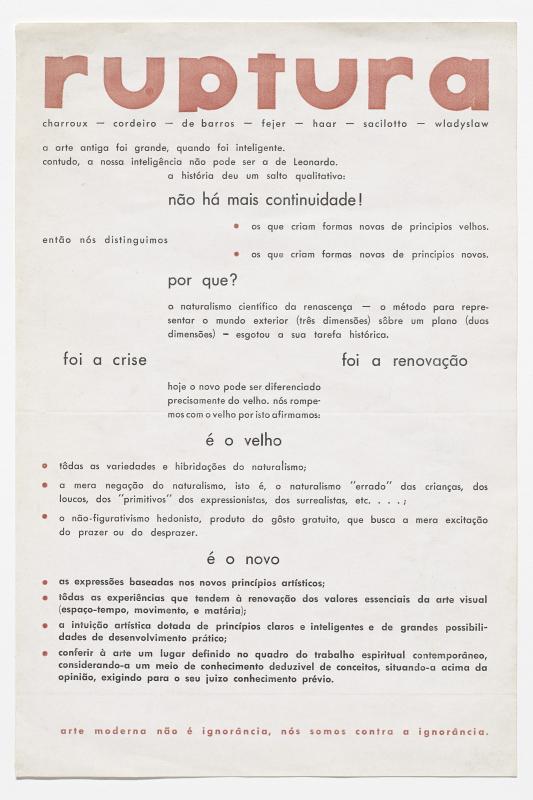At the Grupo ruptura exhibition that was held at the Museu de Arte Moderna in São Paulo in 1952, a number of artists got together—for the first time in Brazil—to show a selection of “concrete” works and to launch a manifesto that called for a radical “rupture” with figurative art. Ever since the late 1940s—when he left his native Rome and came to Brazil—the combative painter, designer, landscape artist, and art critic Waldemar Cordeiro (1925-1973) had been writing articles that were published in the newspapers in São Paulo, where he lived, and where he eventually became the leader of the concrete movement and the spokesman for the Grupo ruptura.
Cordeiro’s argument with the writer, painter, and sociologist Sérgio Milliet (1898-1966) is a good example of the debate that was sparked by the “Manifesto ruptura” (1952). In his acerbic reply to Milliet, Cordeiro clarifies the theoretical references that underpin the ideas expressed in his manifesto, referring to the theory of pure visual effect proposed by Konrad Fiedler (1841-1895) as a result of his prevailing neo-Kantian philosophical approach. These theories influenced the turn-of-the-century views on art history held by Wilhelm Worringer and Paul Frankl, among others, in the early twentieth century.
For more on this matter, see by Waldemar Cordeiro, Geraldo de Barros, Lothar Charoux ET. AL., “Manifesto ruptura” (São Paulo, 1952) [doc. no. 771349]; and the newspaper review by Sérgio Milliet, “Duas exposições”, O Estado de S. Paulo, December 13, 1952.

